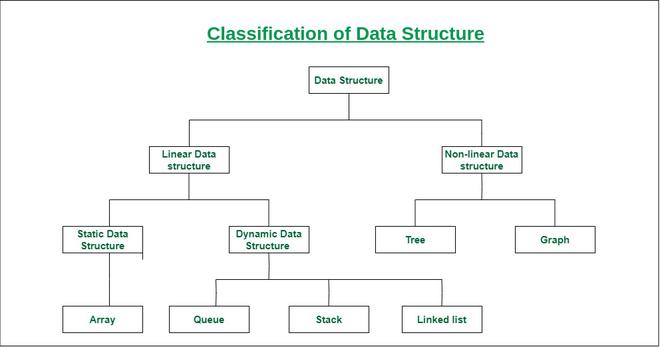Data Type
We already have learned about data structure. Many times, what happens is that people get confused between data type and data structure. So let’s see a few differences between data type and data structure to make it clear.
Classification of Data Structure:Data structure has many different uses in our daily life. There are many different data structures that are used to solve different mathematical and logical problems. By using data structure, one can organize and process a very large amount of data in a relatively short period. Let’s look at different data structures that are used in different situations.  Classification of Data Structure
Need Of Data structure :The structure of the data and the synthesis of the algorithm are relative to each other. Data presentation must be easy to understand so the developer, as well as the user, can make an efficient implementation of the operation.
|
|---|